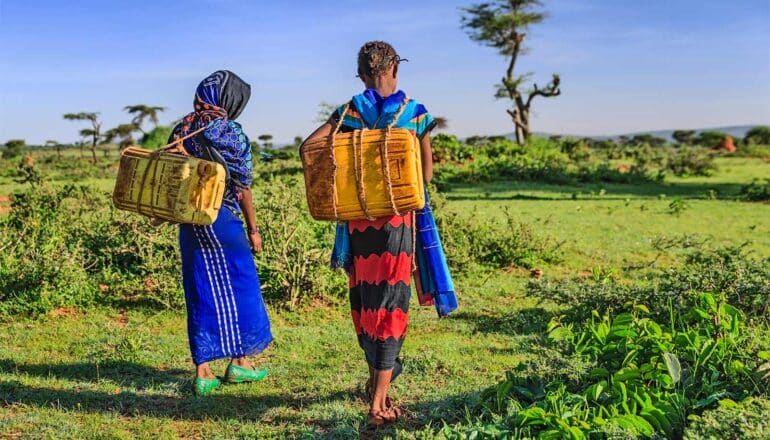
New research examines the critical problem of drinking water access in rural areas of developing countries and recommends optimal locations to build new water projects.
In 2020, 771 million people worldwide still lacked access to clean drinking water, according to UNICEF and the World Health Organization.
For this reason, many nongovernmental organizations (NGOs) prioritize building new water projects, including handpumps and small piped systems, to bring clean water to rural areas of developing countries.
As reported in the journal Production and Operations Management, researchers studied access to drinking water in Tigray, Ethiopia, where millions of people walk hours each day to access communal water. The study pulls from field research conducted in Tigray and collaborations with local and international NGOs.
“The burden of getting water falls mostly on women and children,” says Alfonso Pedraza-Martinez, professor of IT, analytics, and operations in the University of Notre Dame’s Mendoza College of Business, who specializes in humanitarian operations and disaster management. “It is not rare to see a woman accompanied by her children carrying a heavy jerrycan full of water back home in the scorching hot weather.”
Due to a lack of local government solutions, NGOs build water projects that extract underground water to reduce the population’s distance and time to access it. In collaboration with US NGO charity: water and Ethiopian NGO Relief Society of Tigray, the team worked to understand the roles of the different stakeholders.
“Building water projects is expensive and funding is scarce,” Pedraza-Martinez says. “NGOs must select locations for new water projects while navigating tight budget constraints and very limited access to data on demand locations.
“We discovered that communities actively participate in the management of existing water projects, so we propose that two neighbor communities collaborate, pooling their demand, to increase the potential supply for both communities.”
The team created a unique dataset with current demand and distance to an existing water project in Tigray. Using analytics, they built an optimization or ideal solution (centralized model) that incorporates community collaboration, and compared its solutions with the current practice that serves each community separately.
The community collaboration model proved to be a better solution—in terms of distance to water and equity in the access to water—than the other models they considered.
The “minimax” model adjusted the objective to minimizing the maximum distance to water and the equitable allocation model adjusted the current per capita budget allocations to assign more budget to beneficiaries who are further from water.
“When Ethiopian communities (kebeles) collaborate to access water as a single, larger community, it removes geopolitical boundaries for water purposes,” Pedraza-Martinez says.
“It gives people who live on the outskirts of one kebele the option of walking a shorter distance toward another to use a hand pump or other water source, rather than walking a longer distance to find one in their own kebele. If there is cooperation, this solution is very effective to reduce distance and increase equity.”
Motivated by Ethiopia’s current civil war, the team also created a model to study ways to improve drinking water access amid supply shocks.
The team is sharing its findings with charity: water, which is using the new model to inform the selection of locations for new water projects in Malawi and the Central African Republic, along with other countries.
Additional coauthors are from Indiana University.
Source: University of Notre Dame
The post How to boost water access in developing countries appeared first on Futurity.
from Futurity https://ift.tt/ScpOF0Z
No comments:
Post a Comment